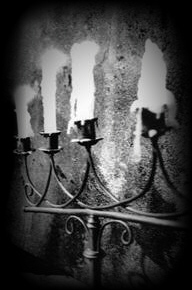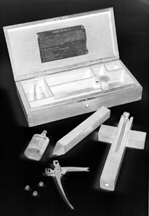The murderous prince who will live in legend forever.
In the 1500's there lived a ruler known as Vlad the Impaler.
A charming fellow, Vlad. He impaled his enemies by the thousands, and sometimes washed down his meals with their blood. (Thus, he became known as a "vampire".)
Stories of his cruelty abound. He is said to have skinned alive unfaithful lovers and when two visiting ambassadors refused to remove their hats, Vlad ordered the hats nailed to their heads.
In the 1890's, a British writer came across the story of Vlad, and was inspired to create one of the darkest characters of all time.
Vlad's father was known as Dracul, the Devil. Vlad was the son of the devil. Dracula.
 Of Black Cats and Witches...
Of Black Cats and Witches...
The unlucky black catů how did he get such a "dark" reputation?
In ancient Egypt, cats were considered divine.
Early Christians trying to stamp out pagan worship turned the tables on cats, suggesting they were demons.
Black cats in particular got in trouble during the 1600's.
Europe was gripped by a witch hysteria. Thousands of women were burned as witches, hung or drown and black cats came to be regarded as their evil companions.
People even testified in court about witches who turned themselves into black cats.
Eventually, the hysteria subsided. But the black cat was left with an evil reputation that still lingers.

 A Different Vampire Story;
A Different Vampire Story;

 Count Vlad and Dracul, the Devil...
Count Vlad and Dracul, the Devil... Of Black Cats and Witches...
Of Black Cats and Witches...